Pandanus (pandanus)
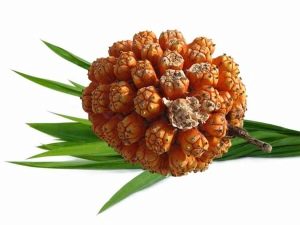
The treelike plant pandanus belongs to the Pandanaceae family. It is also called pandan.
The Latin name is pandanus amaryllifolius.
Other names:
- German Duftender Schraubenbaum, Schraubenpalme;
- English pandan, textile screw pine;
- fr. baquois, vaquois.
Appearance
- The pandanus fruit looks like a pineapple, but is a completely different exotic fruit. Plus, it grows on a tree. Such a fruit is quite large, but light. It has a round shape and many seeds. Before ripening, the pandan fruit has a light green hue, and when ripe, the fruit becomes bluish, red, purple or yellow.
- The pandanus tree itself has a long trunk (on average 10-15 m). It is very branched and has many adventitious roots, which are also called stilted.
- The leaves are narrow and spirally arranged in several rows. They are very long - up to 4 meters. Their dorsal side is covered with many sharp needles.
- The flowers of the plant are collected in cobs or paniculate inflorescences.
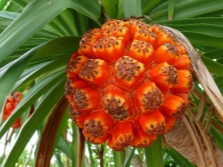


Kinds
There are approximately 750 types of pandanus. They mainly grow in the Eastern Hemisphere in the tropics. About 90 plant species can be found in Madagascar.
Here are some of the types of pandanus:
- roofing (people use almost all of its parts),
- candelabra,
- dwarf,
- labyrinth,
- doubtful,
- useful,
- forked and others.

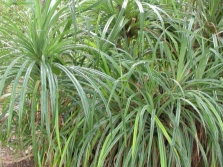
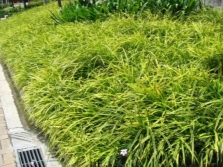
Where does it grow
Pandanus is found in African countries, in Australia, in India, on the island of Madagascar, in the tropical forests of the Malesian region, in Indochina, and also on some Pacific islands.Also, the plant is very successfully cultivated in other countries.
Pandanus survives well in different conditions. It grows both on the sea coast and on stony and sandy soils. Also, the plant feels good in swamps, volcano slopes, river banks, coral reefs, and forests.

Peculiarities
- The aroma of pandanus is similar to the smell of rose oil, but is more fruity.
- In the smell of the plant, you can feel notes of musk, jasmine, and sandalwood.

Beneficial features
- The plant has an anti-spasmodic effect, so it is effective in relieving headaches.
- Pandanus is also used for rheumatism.
- The plant has a stimulating effect on the immune system.
- It calms and strengthens the nervous system.
- It also has antiseptic properties.

Harm
The plant can be harmful to people in the presence of individual intolerance to pandanus.
Oil
The oil obtained from the seeds of the pandanus fruit is used for medicinal purposes. It is considered a tonic and is also used against headaches.

Application
In cooking
As a spice, pandan leaves are used in a bound or even wilted form. They have a nutty flavor with hints of hay and vanilla.

Leaves:
- Since pandanus leaves have a pleasant smell and a slightly sweet taste, they are popular in Asian countries as a condiment for food. They wrap curry, rice and other dishes.
- In Thai cuisine, the leaves are used to flavor and color desserts green. The most popular pandan dessert is custard custard.

Fruit:
- Edible fruits are eaten fresh or boiled.
- Boiled pandan fruits are mashed with coconut milk. This puree can be used to make steamed cakes.
- Pandan drinks are rich in nutrients. For their preparation, fruits are dried and ground into powder. Palm syrup and water are added to the powder.
- The kernels of the stones from the pandan fruit are also eaten. Their core is usually dried, but it is also smoked.
- Pandan juice is added to bread and other foods.

Not all pandan species have fruits that are eaten. There are only decorative types.
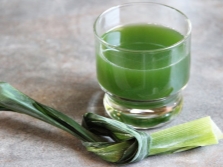
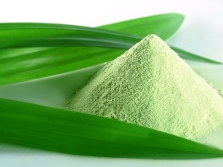




pandan lamingtons
- 8 eggs
- 250 g powdered sugar
- 3 teaspoons spoons of pandanus paste
- 250 g flour
- 30 g butter
- 600 g white chocolate
- 300 ml cream
- 400 g coconut flakes
Mix sugar, pandan paste and eggs, then beat in a water bath for 5-10 minutes until foam forms. Pour in the flour, and also add the butter, after melting it. Pour the batter into the mold and bake in the oven for twenty minutes. While the lamingtons are cooling, melt the chocolate and cream in a water bath. After cutting the dessert into squares, first dip them in chocolate, then roll in coconut and leave until hardened.

In medicine
- Pandanus fruits, its flowers and leaves are used in folk medicine.
- Tea made from flowers is a good mucolytic agent.
- A decoction of the roots of the plant is also used. It has diuretic and antipyretic properties.
- The oil obtained from pandan seeds helps with headaches.
- The plant is used for skin diseases.
- Eating pandan fruits for food, get rid of stress, insomnia. They calm and also positively affect brain function.
- It is able to strengthen the immune system.
- The plant is also used in the treatment of ear diseases.
- Stimulates the work of the pancreas and activates the secretion of bile.
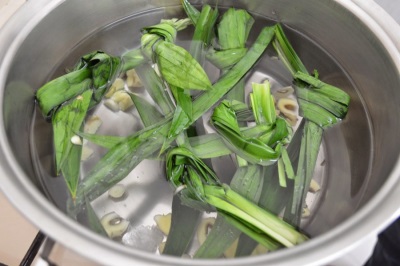
At home
- From the veins of the leaves of the pandanus, a material is made with which mattresses are stuffed.
- The veins of the leaves of the roofing pandan are also used in the manufacture of various wicker things, pillows, baskets, hats, toys, fans and other things.
- The fruits of the plant are used for witchcraft rites.
- The trunk of the pandanus is used as fuel, and also as a material for the manufacture of rafts.
- Some species of pandanus have an original appearance, so they serve as ornamental plants.



Varieties
Veitch - often grown at home, especially the variety Compactus with a large density of foliage. This species has striped, silvery-white leaves.
Sandara - more suitable for small apartments. On its shorter leaves there are many yellow-white stripes.
Useful - recommended for large houses. Its height reaches 150 cm, and the length of the leaves of this plant is up to one meter.
cultivation
At home
Pandanus is often grown for ornamental purposes. It is not difficult to grow it, even a novice florist will cope with this task. The plant prefers light or slightly shaded places.
It is best to put the pandan on a window facing west or east. If the plant is on a south-facing window, it should be protected from light by shading.
Lack of lighting harms the pandanus. Its sheets are bent and become less durable, and if they have a variegated color, then the lack of light leads to its loss. That is why in autumn and winter you should monitor the good illumination of the plant. It is also required to ventilate the room often, but without the formation of a draft.
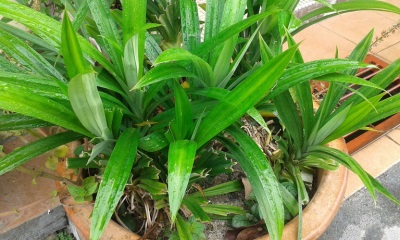
So that the pandanus does not grow in one direction, the pot with it should be rotated often.
In summer, the plant should be watered abundantly with soft water, which has settled well and has a temperature slightly above room temperature.
Do not wash the leaves or spray them, so as not to cause the stem to rot.
To provide the plant with wetter conditions, it can be placed on a pallet containing pebbles, expanded clay, or wet moss. To remove dust from the sheets, they are wiped with a slightly damp cloth, moving from the base to the tops. Since there are thorns on the leaves, this manipulation should be performed with gloves.



Do not cut off the aerial roots that will appear on the plant.
Feed pandans additionally once a month in winter and autumn, and at other times - once every two weeks.
Repot the young plant annually, and the adult pandan every two to three years. To do this, select sterile neutral soil. Do not bury the pandan in it, but plant the plant at the same level at which it grew.
Landing and care
- Before sowing, pandan seeds must be soaked in warm water, where stimulants are added. After sowing them, the ground is covered with polyethylene or a glass cap to maintain a temperature of +25 degrees.
- Crops need to be aired and sprayed.
- They will germinate faster if you place the seeds in mini greenhouses that have bottom heating.
- The first shoots will appear in two weeks.
- When the seedlings have 2-3 leaves, they need to be transplanted into pots one at a time.


















Ouch. how does it look like a pineapple, only more spread))
I immediately wanted to make some dessert. At first, you won’t think that the color is natural. It looks like dyes were used.
I bought dried pandan leaves in the store. Brewed - no color and no smell.
I tried the fruit, there is no aroma, it tastes like a raw pumpkin, there is almost no pulp, only fibers. Tasteless and not worth the money.